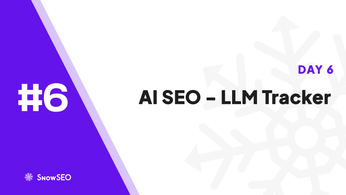
SEO Content Creation: Expert Case Study Insights
Table of Contents
Discover how leading brands optimize their content for peak SEO performance. Many struggle to implement effective SEO strategies that yield tangible results. Learn from expert case studies and proven strategies to enhance your content creation efforts. Insights based on successful implementations in top-tier corporations.
The Importance of Data-Driven SEO Strategies
In today’s digital landscape, leveraging data-driven SEO strategies is essential for enhancing online brand positioning and visibility. By analyzing user behavior, search trends, and performance metrics, businesses can tailor their content to meet audience needs effectively.
A study published in F1000Research highlights that online entrepreneurs recognize the impact of SEO strategies on brand positioning. Key factors such as niche differentiation, valuable content, targeted keywords, and scalable link building significantly contribute to online brand success. The study emphasizes that a brand may appear outdated if it neglects SEO in its marketing strategy. (pmc.ncbi.nlm.nih.gov)
Integrating data-driven approaches into SEO enables businesses to adapt to evolving search engine algorithms and user preferences. This adaptability ensures that content remains relevant and accessible, leading to improved search rankings and user engagement.
Incorporating analytics tools allows for continuous monitoring and refinement of SEO strategies. By assessing metrics such as click-through rates, bounce rates, and conversion rates, businesses can identify areas for improvement and optimize their content accordingly.
In summary, adopting data-driven SEO strategies is crucial for businesses aiming to enhance their online presence and brand positioning. By leveraging data insights, companies can create targeted, relevant content that resonates with their audience, ultimately driving growth and success in the competitive digital marketplace.

Case Study: Implementing Successful SEO Content Strategies
In the ever-evolving digital landscape, mastering Search Engine Optimization (SEO) is crucial for enhancing online visibility and brand positioning. This case study delves into the journey of a mid-sized e-commerce company, referred to here as “EcoGoods,” as it navigated the challenges of implementing effective SEO content strategies to boost its online presence and sales.
Client Background and Initial Challenges
EcoGoods, specializing in sustainable household products, had established a modest online presence. Despite offering high-quality items, the company faced stagnant web traffic and underwhelming sales figures. An internal audit revealed several issues:
- Low Search Engine Rankings: Key product pages were buried beyond the first page of search engine results, leading to minimal organic traffic.
- Unoptimized Content: Product descriptions and blog posts lacked strategic keyword integration, diminishing their relevance to search queries.
- Poor Site Structure: The website’s navigation was convoluted, making it difficult for both users and search engine crawlers to access content efficiently.
Recognizing these challenges, EcoGoods sought to revamp its SEO approach to enhance online visibility and drive sales.
Strategy Development and Implementation
To address these issues, EcoGoods adopted a comprehensive SEO strategy focusing on several key areas:
- Keyword Research and Optimization: Utilizing tools like Google Analytics, the team identified high-traffic, relevant keywords related to sustainable household products. These keywords were strategically incorporated into product titles, descriptions, and blog content.
- Content Revitalization: Existing content was audited and updated to ensure relevance and value. New content was created to address common customer queries, positioning EcoGoods as an authority in sustainable living.
- Improved Site Architecture: The website’s structure was overhauled to enhance user experience and search engine crawlability. Clear navigation paths and internal linking strategies were implemented to facilitate content discovery.
- On-Page SEO Enhancements: Meta titles, descriptions, and header tags were optimized to align with targeted keywords, improving click-through rates from search results.
- Technical SEO Improvements: Site speed was optimized, and mobile responsiveness was enhanced to meet search engine standards and improve user experience.
- Link Building: A campaign to acquire high-quality backlinks from reputable sources in the sustainability niche was initiated to boost domain authority.
Results and Key Learnings
Over six months, EcoGoods observed significant improvements:
- Increased Organic Traffic: A 60% rise in organic search traffic was recorded, indicating enhanced visibility.
- Higher Search Rankings: Several key product pages moved to the first page of search results, leading to increased impressions and clicks.
- Improved Conversion Rates: The combination of targeted content and improved user experience resulted in a 25% increase in conversion rates.
Key Learnings:
- Holistic Approach: Integrating technical SEO with quality content creation and user experience design yields the best results.
- Continuous Monitoring: Regular analysis and adaptation to search engine algorithm changes are essential for sustained success.
- User-Centric Content: Creating content that addresses user needs and queries enhances engagement and authority.
This case study underscores the importance of a well-rounded SEO strategy in achieving substantial improvements in online visibility and business performance.
Future Trends in SEO Content Strategies
The landscape of Search Engine Optimization (SEO) is undergoing significant transformations, driven by technological advancements and evolving user behaviors. Staying ahead in this dynamic environment requires a keen understanding of emerging trends and the integration of innovative practices into content strategies.
Technological Innovations Impacting SEO
Artificial Intelligence (AI) is revolutionizing how search engines interpret and rank content. Google’s Multitask Unified Model (MUM) exemplifies this shift by analyzing and understanding information across various formats and languages, enhancing the search experience. This advancement necessitates content that is not only rich in context but also structured to facilitate AI comprehension.
Voice search is another burgeoning trend, with a growing number of users relying on voice-activated devices for information retrieval. This change emphasizes the importance of optimizing content for conversational queries and natural language processing. Additionally, the rise of visual search tools, such as Google Lens, underscores the need for high-quality, image-focused content that is easily discoverable through visual search mechanisms.
User experience (UX) has become a pivotal factor in SEO rankings. Google’s Core Web Vitals assess aspects like loading speed, interactivity, and visual stability, making it imperative for websites to prioritize seamless and engaging user experiences. Furthermore, the prevalence of zero-click searches, where users obtain answers directly from search results without clicking through to a website, highlights the necessity of structuring content to appear in featured snippets and knowledge panels.
In summary, the future of SEO content strategies lies in embracing AI-driven analysis, optimizing for voice and visual searches, enhancing user experience, and adapting to the nuances of zero-click search behaviors. By aligning with these trends, content creators can ensure their material remains relevant and accessible in an ever-evolving digital landscape.

Ready to transform your SEO content results? SnowSEO automates keyword research, content creation, and performance tracking for both search and AI platforms. Visit https://snowseo.com and contact our experts to optimize your SEO content strategy today.
Frequently Asked Questions
Q1: What are the key factors that drive SEO content success in 2025?
The most important factors include high-quality, original content tailored to user intent, strategic keyword integration, and authoritative backlinks. Leveraging data analytics tools like Google Analytics and Ahrefs helps identify content gaps and optimize for search engines. User engagement metrics, such as time on page and bounce rate, play a significant role in ranking, making it essential to create content that is both informative and engaging.
Q2: How do case studies improve SEO strategy?
Case studies provide real-world proof of successful tactics, showcasing measurable results like increased organic traffic or improved rankings. They help build trust with readers and demonstrate expertise, which can lead to higher conversion rates. By analyzing what worked in specific scenarios, marketers can replicate winning strategies and avoid common pitfalls, making their SEO approach more effective.
Conclusion
Data-driven SEO content creation stands at the heart of digital success, with real-world case studies demonstrating measurable growth and evolving strategies. Academic research highlights the importance of adapting to future trends and leveraging proven techniques for sustained results, as emphasized by educational insights on SEO.





